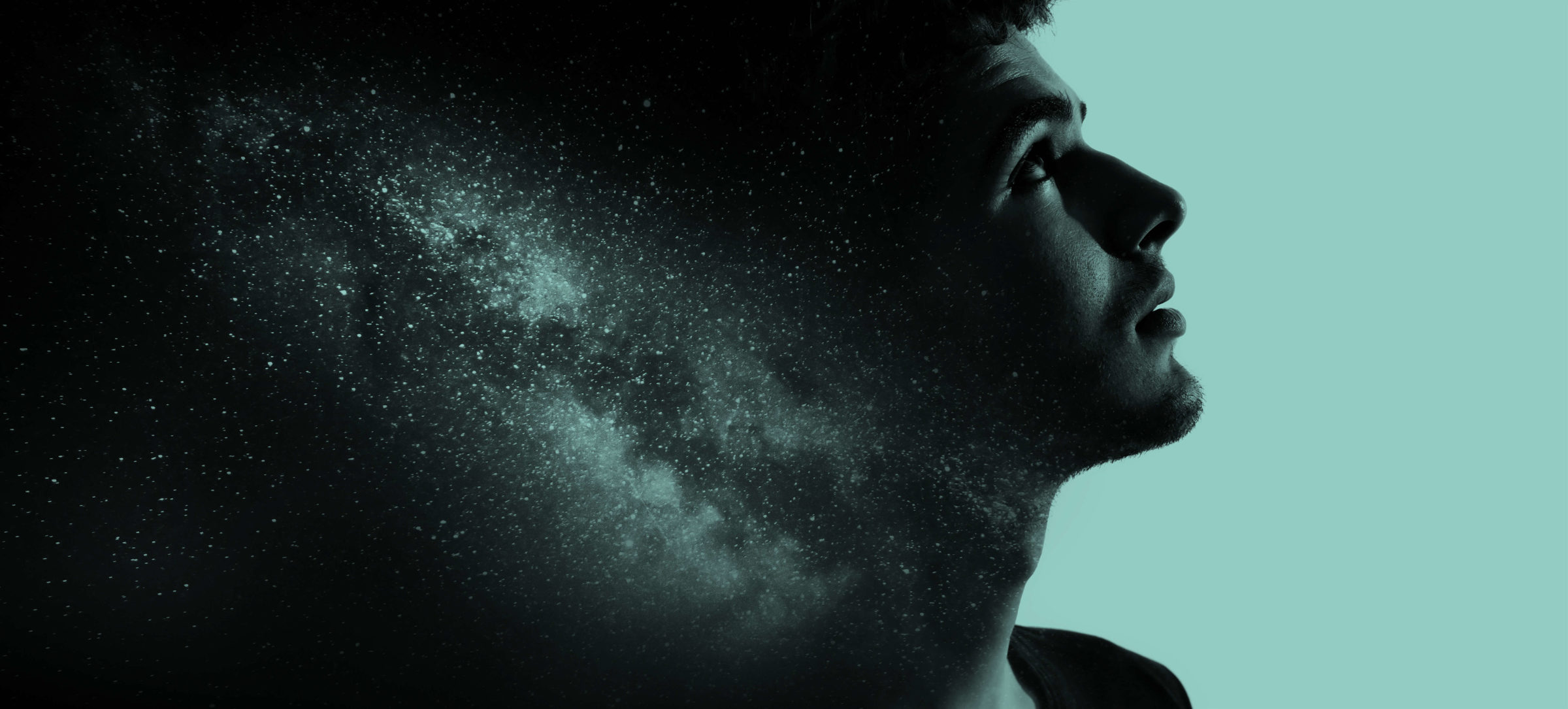
A Social Psychologist’s Journey into the Study of Science and Belief
By Jordan LaBouff
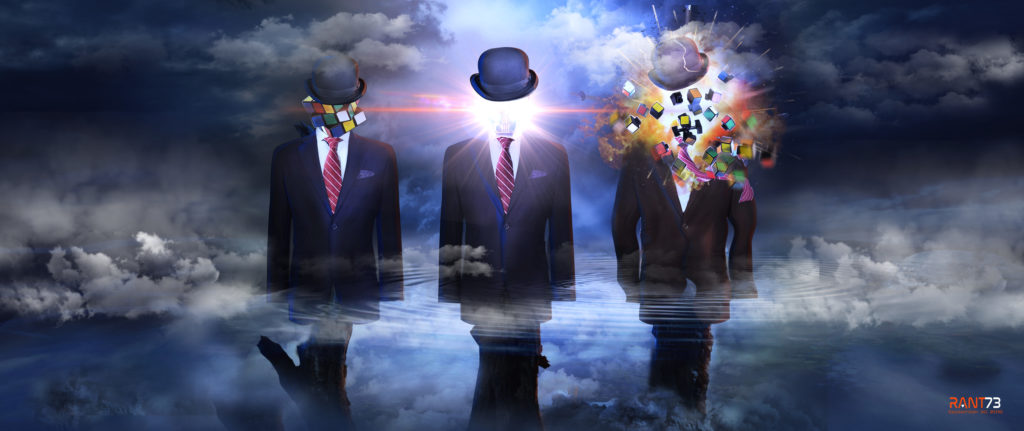
Like most of us, I am often blind to my own biases – even in my research. Nothing has made that more clear to me recently than my wonderful experiences beginning to study the intersection of Science and Belief. In my first project, I was confronted by my biases about the relationship between science and religion, my expectations about the beliefs of religious westerners, and some assumptions about my own discipline’s place in the academic landscape. And I was wrong about all of it.
My background is as a social psychologist of religion. I’ve spent my early career investigating religious social identities and the impact of those identities on people’s choices to help someone in need, or their attitudes towards religious outgroups. A few years ago, I had a fascinating opportunity in my local town of Bangor, Maine (USA). Perhaps more familiar to our European colleagues, Bangor recently started the Maine Science Festival – a block of public events to celebrate and communicate the science done in the state. As a part of this Festival, our local theatre company produced a play by Deborah Zoe Laufer, End Days, which relies heavily on the Conflict Narrative. It pits science and religion as explanatory systems opposed to one another – even intentionally having the same actor play Jesus and Stephen Hawking as the characters look for meaning after a tragedy.
After describing some of the research questions stirred by the play to my colleagues, I learned about an ongoing project by Carola Leicht, Carissa Sharp, and Fern Elsdon-Baker and was graciously invited to join them in an attempt to measure and understand people’s perceptions of conflict and compatibility between science and religion.
Based on my experiences with work on religious intergroup bias and my general ignorance of the literature specific to science and belief, like most of us, I relied on my own expectations and stereotypes. I expected the majority of the play’s audience to endorse the ubiquitous conflict narrative, and that religious participants would be the most likely to see conflict between the worldviews. I thought that American Christians might feel their cultural status was threatened by science (as Simpson & Rios, 2019 find), and thus be more likely to see science and religion in conflict.
But that’s not at all what we found. In the pilot in the theatre and then in several large-scale studies with over 1500 participants in the UK and Canada, we found that people generally see science and religion as compatible, and that religious social identities were associated more with perceptions of compatibility whereas atheism was associated more with perceptions of conflict. First, we developed and validated a measure of perceptions of conflict and compatibility between science and religion (Leicht, Sharp, LaBouff, & Baker, forthcoming 2020). Through that work, we found that people tend to see compatibility or conflict in science and religion in two related but distinct domains. The first domain describes human-world interactions; that is, the extent to which science and religion are compatible when it comes to understanding and treating physical and mental illness, and how humans should interact with the environment. The second described explaining “big questions”; that is, the extent to which science and religion are compatible when it comes to understanding the origins of human and non-human life, the universe, and what happens after death. In general, participants endorsed more conflict in the explanations domain, but self-identified Christians perceived more compatibility than agnostics, and agnostics more than atheists across both domains.
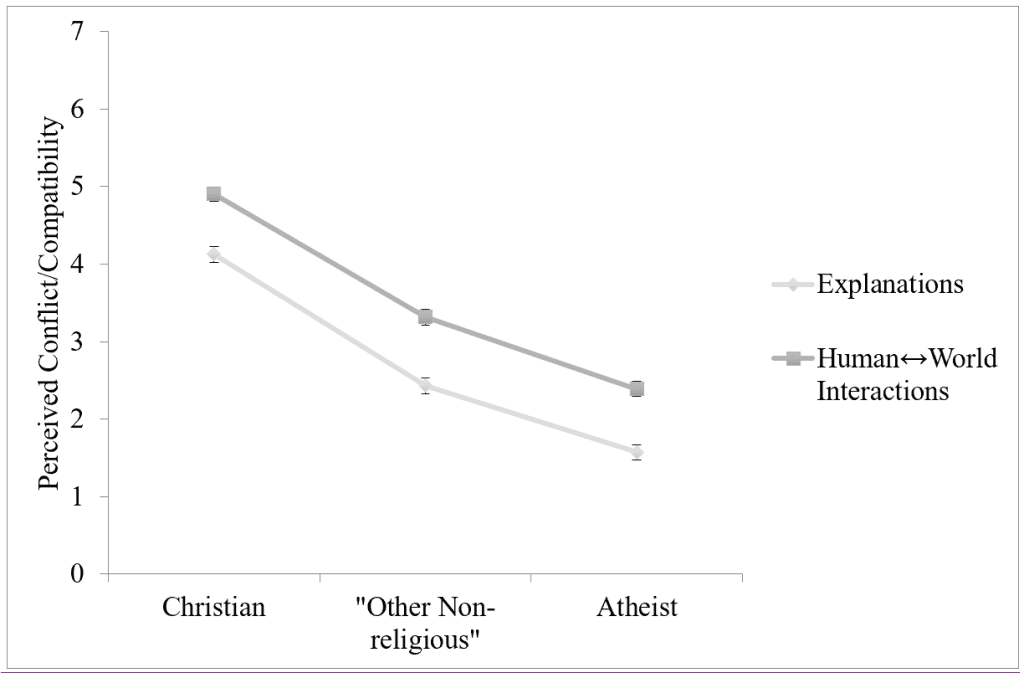
(Source: Leicht, Sharp, LaBouff, & Baker, forthcoming 2020)
I thought these findings were interesting and I was excited to present our work at the Science and Religion: Exploring the Spectrum conference in Manchester in 2017. I was surprised by how multidisciplinary the group was – not just that historians and philosophers and psychologists and technologists were all at the same conference, but they were in the same sessions. I was frankly somewhat surprised to see I was on a panel with two historians, and I think I was implicitly unsure what I’d get out of my peers’ presentations.
Again, my expectations couldn’t have been more incorrect. What I learned from the historians was that what we had found among modern westerners was well known across western history; that the conflict narrative we were studying as a foundational way of thinking about these domains was actually a relatively recent way of viewing them, and one that had emerged in the past in similar contexts and in ways that could inform our psychology if we would take the time to really dive into questions multi-disciplinarily from the start, rather than at the finish. Their work, and the relationships built through the network, has opened up a whole new set of exciting questions.
My journey into the study of science and belief in society has been full of surprises that have helped me identify and start to deconstruct some of my biases and expectations. It’s already proven fruitful and frustrating in the best ways, and I’m excited for network’s future activities, where we can continue to develop truly interdisciplinary and multidisciplinary projects that will allow social psychologists like me to use our specialized tools to join in answering basic and applied questions about the intersection of science and belief.
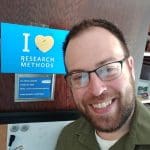
Jordan P. LaBouff is an Associate Professor of Psychology and Honors at the University of Maine. His research investigates how beliefs, and the ways in which people hold those beliefs, interact with personal virtues and social situations to influence attitudes. For more see his Research Profile.
Follow Jordan on Twitter: @JLaBouff
